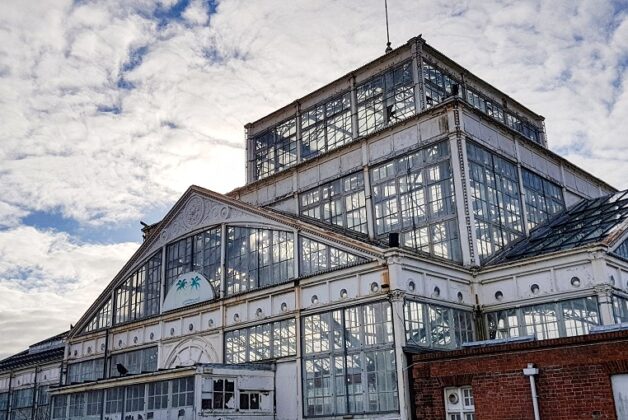The expansion includes a new $17 million commitment to support the American Museum of Natural History, the Brooklyn Museum, the Cooper-Hewitt Smithsonian Design Museum, the San Francisco Museum of Modern Art, Singapore’s Gardens by the Bay, and the Science Museum in London to produce innovative projects like immersive rooms, interactive devices and mobile applications that use cutting edge technology and enable visitors to share content.
Originally named for Tate Modern’s continuing ambitious digital program designed to transform the visitor experience by encouraging interaction, debate and creative exchange within the gallery space and online, Bloomberg Connects brings cultural institutions to life by connecting visitors with dynamic digital tools to help them explore cultural institutions both on and off site. Bloomberg has partnered with Tate Modern on innovative digital content and interaction since the gallery opened in 2000; including award-winning multimedia tours and apps, and the weekly video series, TateShots, which are enjoyed by millions of art lovers every year.
“Everyone should have the opportunity to experience all that the arts have to offer, and technology can help make that possible by putting so much information right at our fingertips,” said Michael R. Bloomberg, Philanthropist and Mayor of New York City from 2002-2013. “Each of the institutions we’re supporting is using technology in different ways to engage, educate, and immerse their visitors – and to make their world-class resources available to a greater number of people, more of the time.”
Starting with support for traditional audio guides, Bloomberg Philanthropies has helped cultural institutions stay current with the latest trends in technology. With funding from Bloomberg Philanthropies, these cultural institutions are developing new digital projects to revolutionise the visitor experience:

The Science Museum, London, Creating Digital Experiences for New ‘Information Age’ Gallery
The Science Museum will use groundbreaking interactive digital tools to redefine the museum visitor experience through a stunning new narrative-led gallery on the history of information and communications technology. Due to open in October, new features will include interactive screens, immersive digital experiences, a digital art commission, online learning resources as well as apps and a game. At its heart, Information Age will harness digital technology to reveal the science behind the collection, and bring abstract concepts such as the web and cellular data into focus.
“Our new Information Age gallery will celebrate many of the great innovations and inventions in communication technology that have transformed how we communicate over the past 200 years,” said Ian Blatchford, Director of the Science Museum. “It is therefore only fitting that we use the best interactive digital technology to enhance the Information Age experience for all our audiences, both within the Gallery and globally through our online channels..”
Cooper Hewitt Creating First-Ever Smart Pen for Museums
The newest example of creative engagement includes Cooper-Hewitt Smithsonian Design Museum, which will re-open its building to the public on December 12, 2014 with 60% more gallery space and a reinvented visitor experience. All visitors will be equipped with an interactive Pen to digitally collect objects on view, as well as additional collection objects via ultra-high-definition interactive tables. The Pen will be a key part of every visitor’s experience, enabling them to become designers in their own right with the ability to create their own designs. With the Pen, they will be able to record their visit, which can be viewed and shared online and supplemented during future visits.
“Our interactive Pen will take visitors from observers to participants, allowing them to delve deeper into our collections and the design process,” said Caroline Baumann, Director of Cooper Hewitt. “We have created a 21st-century museum that will bring our collections to life and make design even more relevant and exciting to today’s audiences. With this support Cooper Hewitt – and design – will be more accessible than ever before.

San Francisco Museum of Modern Art (SFMOMA) Radically Reinventing Digital Strategy
As part of SFMOMA’s transformative building expansion, the museum’s digital program is undergoing an equally radical reinvention in time for reopening in 2016. SFMOMA is implementing new mobile and on-site technologies to break down barriers between art, engagement, and learning. New offerings include multi-player geolocation games, thematic walking tours through the city, art-based learning activities for students and teachers, art commissions in the digital space, and commentary from an eclectic set of voices unique to the Bay Area. SFMOMA will also encourage visitor participation, particularly in its Photography Interpretive Center, an innovative space within the museum’s larger Pritzker Center for Photography that will allow visitors to explore the medium through interactive experiences.
“We are interested in using technology to create a smart museum that reflects the innovation and creativity of the San Francisco Bay Area community it serves,” says SFMOMA director Neal Benezra. “What will make our new mobile platform most distinctive is its activation as a ‘fifth wall’ in the galleries, or a space for experimentation that’s as varied and provocative as what goes on within the traditional four museum walls. We are grateful for this critical support from Bloomberg Philanthropies, which will allow us to use leading-edge technology to foster meaningful conversations between artists and audiences.”
Brooklyn Museum Connecting Visitors to Experts in Real-Time
The Brooklyn Museum’s initiative will enable visitors to use their mobile devices to ask questions of experts in real-time. Location based technology will be implemented throughout the museum so that a visitor’s location can be used to provide relevant answers as well as recommend objects in close proximity. “Through this initiative the Brooklyn Museum will set a new standard in visitor engagement by creating a dynamic and responsive museum that leverages technology and our expertise to foster dialogue between museum staff and all of our visitors,” said Arnold L. Lehman, Shelby White and Leon Levy Director of the Brooklyn Museum.

American Museum of Natural History Upgrades Navigational App
Explorer was the first app to provide GPS location awareness indoors – providing essentially turn-by-turn navigation. Explorer 2.0, currently in development, will leverage that capability as it is transformed into a dramatically re-imagined on and off-site experiential guide to the museum. The new app will offer museum visitors a tool to experience the museum in novel ways including building personalized tours, augmenting collection exploration, providing exclusive content, and capturing and sharing their favorite exhibits, objects, and concepts at the museum. Curated media and multi-dimensional interactives will serve as a gateway to all the museum has to offer. Crucial visitor amenities, such as ticket reservations, mapping, and exhibit information will also be provided.




